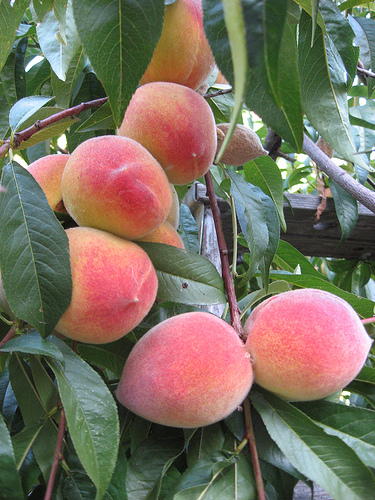Train and Prune Fruit Trees
From WikiEducator
This unit standard is for people working in fruit production. People credited with this unit standard are able to: identify the main fruit tree training systems and tree parts; train and prune a tree between newly planted and three years old; prune a mature tree according to a training system; and dispose of prunings.
Contents
This unit is used in the following courses
Identify the main fruit tree training systems and tree parts
- Main forms of fruit tree training systems are identified.
Range: may include but is not limited to – axis, single leader, vase shaped, Tatura trellis, Lincoln canopy, Ebro-espalier, A- or Y-frame.
- Limbs with a strong crotch angle are identified.
- Leaders, fruit arms, and laterals are identified, and the differences between fruit and vegetative buds are distinguished.
- Apical bud is identified and the effects of apical dominance are explained.
Train and prune trees between newly planted and three years old
- Materials, tools, and equipment appropriate to the task being undertaken are selected.
- Training aids are used to train shoots into the position required by the training system, structural parts are defined, and apical dominance is maintained.
Range: training aids may include but are not limited to – string, wires, plastic ties.
- Dead, diseased, or pest infested wood is removed in accordance with workplace procedures.
- Branches that have an unsuitable crotch angle, are not wanted for framework development, and that are not wanted for temporary fruiting wood are removed.
- Training aids are monitored for effectiveness, adjustments made as necessary, and removed before they damage the bark of the tree.
Prune a mature tree according to a training system
- Materials, tools, and equipment appropriate to the task being undertaken are selected.
- Fruitful and unfruitful wood are distinguished, and unfruitful wood removed in accordance with target crop loading.
- Trees are pruned to maximise fruit quality and quantity of the desired size range.
Range: enhanced light penetration, spray penetration and coverage, worker access, crop load targets.
- Diseased, damaged, or pest-infested wood is removed in accordance with workplace procedures.
- Biennial bearing cycles are recognised, if relevant, and remedial pruning is undertaken in accordance with target crop loading.
- Hygiene and other disease prevention measures are undertaken, and large cuts are treated or not treated, in accordance with workplace procedures.
- Large limbs are removed causing minimal damage to the remaining tree parts.
- Trees are summer pruned in accordance with the crop type and cultivar.
Range: enhanced fruit colour, maturation, reduce tree vigour.
Dispose of prunings
- Management options for pruning disposal that comply with local authority requirements and workplace procedures are identified.
- Prunings are removed from the orchard and disposed of, or mulched on site, in accordance with workplace procedures.
Definitions
- Workplace procedures refer to verbal or written instructions to staff on procedures for the worksite and equipment.
- Legislation relevant to this unit standard includes but is not limited to the Health and Safety in Employment Act 1992, and the Resource Management Act 1991.
- Equipment may include but is not limited to electronic, hydraulic, pneumatic and hand secateurs, pruning saws, sharpening stone, file, scabbard or pouch, loppers, air compressors.
